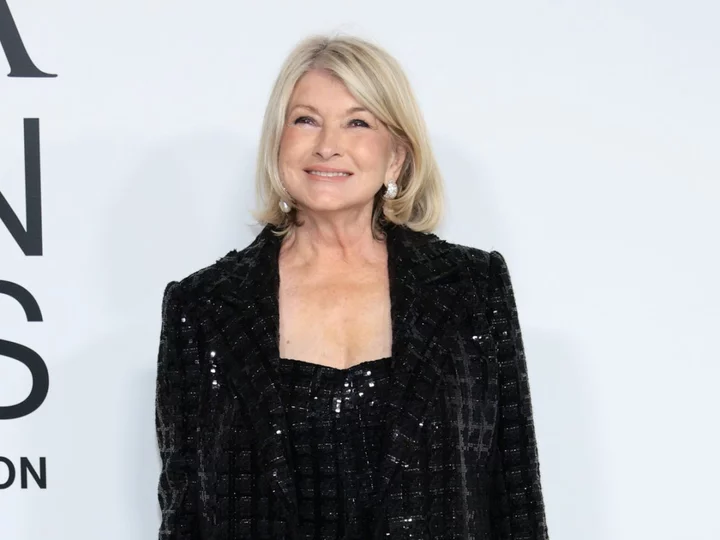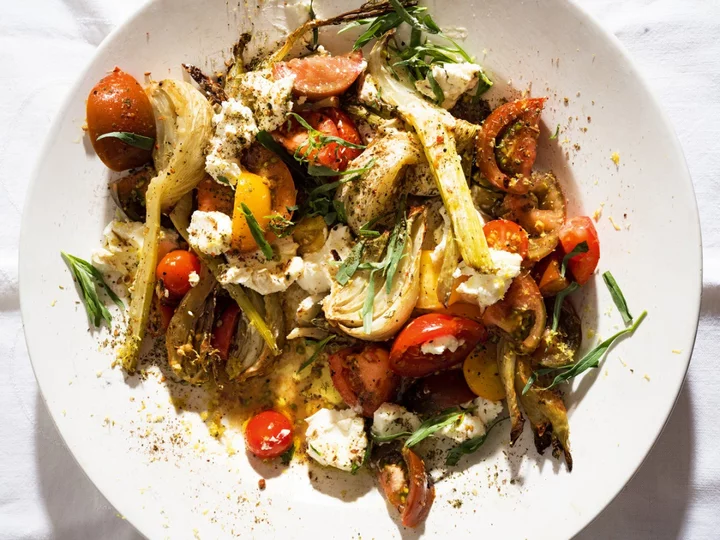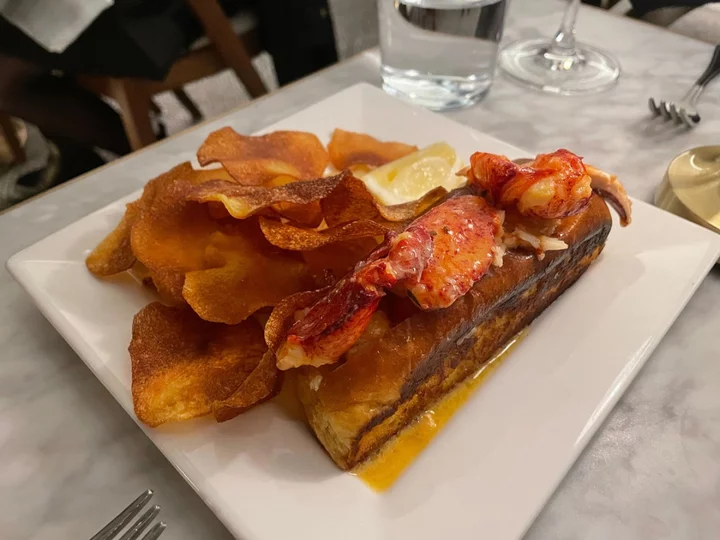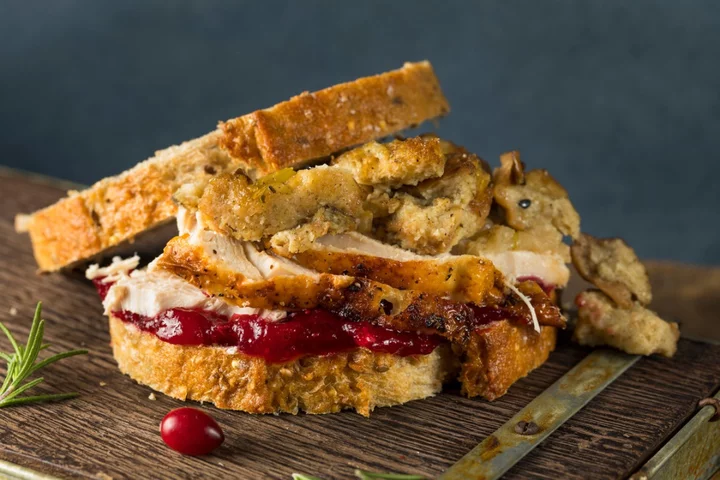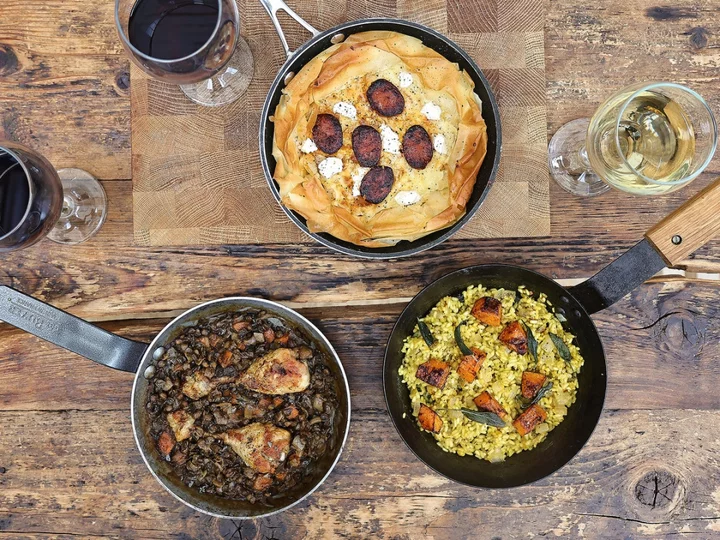The dish that defines me: Rosie Grant’s gravestone recipes
Defining Dishes is an IndyEats column that explores the significance of food at key moments in our lives. From recipes that have been passed down for generations, to flavours that hold a special place in our hearts, food shapes every part of our lives in ways we might not have ever imagined. I run a TikTok called @ghostlyarchive, where I share recipes from gravestones mainly across the US that I make and eat. It all started in 2021, while the Covid pandemic was still ongoing. I was studying to be a librarian. One of my classes was about social media and we were tasked with creating a fresh social media account and had to pick a niche. At the same time, for the same library programme, I had to choose a library or an archive to intern with. I found a fairly virtual internship that let me do things safely outside and in person – which was at a cemetery. I ended up interning in a cemetery archives at a congressional cemetery in Washington DC, and this ended up being my social media niche, too. I chose TikTok, which I was new to at the time, and the class required me to post something about my niche every day for three months. So I learnt that there was a whole section of TikTok called “GraveTok”, where there were gravestone cleaners, preservationists and historians posting content, as well as people who just really loved cemeteries and the storytelling around them. I was posting everyday, and when you post everyday, eventually you’re just sharing anything that you come across that’s vaguely interesting. So at first, it was just about the internship, then I moved on to featuring other gravestones in DC. I started sharing any interesting grave or memorial that I was learning about, and that’s how I heard about Naomi Odessa Miller-Dawson’s grave recipe. Naomi has a really beautiful gravestone in Brooklyn, New York. It’s shaped like an open cookbook and features ingredients for her signature spritz cookies, a type of butter cookie that is made using a cookie press. I remember seeing a photo of Naomi’s gravestone and wondering what they tasted like. Because it was during pandemic times, when we had a lot more free time, I had been learning how to cook more and became really curious about this recipe. So I made them, shared the process on TikTok, and it exploded overnight. People were really intrigued by the grave recipe. In the comments, they were asking questions like: “I didn’t know this, who makes these? Are there other gravestones like this?” Or sharing their own experiences saying: “My mum has a really good recipe” or “This is how I make my cookies”. After that, I learned more about who Naomi was and while I was doing that, I was learning about other gravestones with recipes on them that were featured in local blog posts or posted to Twitter, or even on local news. That’s where the project originated. I’ve now made 23 grave recipes, but that first one was such a journey and I’ll remember it forever. The very first time I made the spritz cookies, I baked them incorrectly because there were no instructions on the gravestone and I didn’t know what a spritz cookie was. I made them in little circles and later learned from people commenting on the video that I was supposed to use a cookie press, so I bought one and made them again. They are really beautiful, delicate little butter cookies that you can decorate. I initially thought they were a sort of sugar cookie, because that’s what the ingredient list sounded like to me, but when I figured out what they were and the proper way to make them, it was such a revelation. Eventually, I met Naomi’s family and made her recipe with them. It was so interesting to learn about her family. I felt very honoured that they welcomed me and took the time to talk about who this woman was and what she meant to them. Naomi was the matriarch of her family and an excellent cook. No one was allowed to bring takeaway food into her home because she would say: “I can cook better than anything you can get at a restaurant.” Her son talked about sitting at the counter in her kitchen, just waiting for the cookies to come out of the oven so he could have a freshly baked one immediately, and he did the same thing when we were cooking together. I often think about how the recipes that get put on these graves are such a big part of family food traditions, which is very cool to me. When I met Naomi’s son and granddaughter, who now live in Pennsylvania, we drove past her old house and visited her grave in the cemetery and heard stories about her. I felt close to Naomi, even though I’d never met her. There’s something about food that connects you to so many memories and people of the past. For example, I’ve never met my great-grandparents, but my mother still cooks her grandmother’s recipes and she still talks about this person when she cooks them. It’s a really interesting connection to the tastes, smells and sights that my great-grandmother, who was an Irish immigrant, had. Weirdly, she is actually buried in the same cemetery as Naomi! There is something about food that makes us feel more present with our deceased loved ones. I don’t know what it is, but food has this amazing quality to do that. Other grave recipes that I’ve tried and continue to make include a fudge recipe from Utah and a snickerdoodle recipe from California. I’ve also made two grave recipes from Israel, which were both written in Hebrew. One of them just had the ingredients on it and his widow told the press that if you know how to cook, you’ll know what to do with them. Well, apparently I don’t know how to cook because I had no idea! Luckily, I work part time at the American Jewish University and their librarians both read and speak Hebrew, so they helped me translate the grave. They decided it was a type of mildly sweet yeasted bread and I’ve made it a few times now, it’s really delicious. My friends have asked for that one very frequently because it’s really an objectively good bread. Most of the recipes that end up on graves tend to be baked goods, or sweet recipes, there are a lot of cookies, cakes, pies, cobbler, ice cream. There are a few savoury ones, like a meatloaf, two cheese dips, and a chicken soup. But the rest of them are pretty much desserts. I think they are chosen according to what is comforting for those who are still around. They think: “My grandma made this thing and I immediately associate that thing with her, or my mum or dad, or whoever”. They have a signature dish and get excited when they think about it, and I think that’s how they choose what to put on the grave. Rosie Grant is an archivist currently living in Los Angeles. She visits cemeteries with grave recipes whenever she travels, and shares her process for making these recipes on her TikTok, @ghostlyarchives. Read More The dish that defines me: Michele Pascarella’s Neapolitan ragu The dish that defines me: Evelin Eros’s rum cake The dish that defines me: Mallini Kannan’s baked honey-soy salmon Is there such a thing as British pizza? Courgette season is nearly over – here’s three ways to make the most of them How to cook to keep your gut healthy
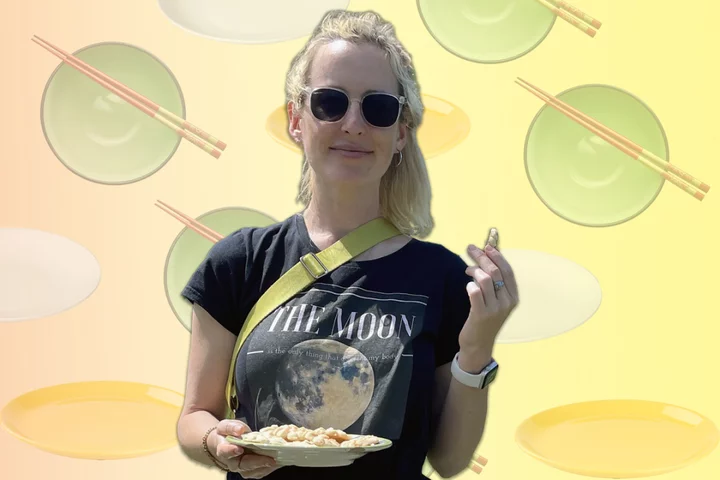
Defining Dishes is an IndyEats column that explores the significance of food at key moments in our lives. From recipes that have been passed down for generations, to flavours that hold a special place in our hearts, food shapes every part of our lives in ways we might not have ever imagined.
I run a TikTok called @ghostlyarchive, where I share recipes from gravestones mainly across the US that I make and eat. It all started in 2021, while the Covid pandemic was still ongoing. I was studying to be a librarian. One of my classes was about social media and we were tasked with creating a fresh social media account and had to pick a niche. At the same time, for the same library programme, I had to choose a library or an archive to intern with. I found a fairly virtual internship that let me do things safely outside and in person – which was at a cemetery. I ended up interning in a cemetery archives at a congressional cemetery in Washington DC, and this ended up being my social media niche, too.
I chose TikTok, which I was new to at the time, and the class required me to post something about my niche every day for three months. So I learnt that there was a whole section of TikTok called “GraveTok”, where there were gravestone cleaners, preservationists and historians posting content, as well as people who just really loved cemeteries and the storytelling around them. I was posting everyday, and when you post everyday, eventually you’re just sharing anything that you come across that’s vaguely interesting. So at first, it was just about the internship, then I moved on to featuring other gravestones in DC. I started sharing any interesting grave or memorial that I was learning about, and that’s how I heard about Naomi Odessa Miller-Dawson’s grave recipe.
Naomi has a really beautiful gravestone in Brooklyn, New York. It’s shaped like an open cookbook and features ingredients for her signature spritz cookies, a type of butter cookie that is made using a cookie press. I remember seeing a photo of Naomi’s gravestone and wondering what they tasted like. Because it was during pandemic times, when we had a lot more free time, I had been learning how to cook more and became really curious about this recipe. So I made them, shared the process on TikTok, and it exploded overnight.
People were really intrigued by the grave recipe. In the comments, they were asking questions like: “I didn’t know this, who makes these? Are there other gravestones like this?” Or sharing their own experiences saying: “My mum has a really good recipe” or “This is how I make my cookies”. After that, I learned more about who Naomi was and while I was doing that, I was learning about other gravestones with recipes on them that were featured in local blog posts or posted to Twitter, or even on local news. That’s where the project originated.
I’ve now made 23 grave recipes, but that first one was such a journey and I’ll remember it forever. The very first time I made the spritz cookies, I baked them incorrectly because there were no instructions on the gravestone and I didn’t know what a spritz cookie was. I made them in little circles and later learned from people commenting on the video that I was supposed to use a cookie press, so I bought one and made them again. They are really beautiful, delicate little butter cookies that you can decorate. I initially thought they were a sort of sugar cookie, because that’s what the ingredient list sounded like to me, but when I figured out what they were and the proper way to make them, it was such a revelation.
Eventually, I met Naomi’s family and made her recipe with them. It was so interesting to learn about her family. I felt very honoured that they welcomed me and took the time to talk about who this woman was and what she meant to them. Naomi was the matriarch of her family and an excellent cook. No one was allowed to bring takeaway food into her home because she would say: “I can cook better than anything you can get at a restaurant.” Her son talked about sitting at the counter in her kitchen, just waiting for the cookies to come out of the oven so he could have a freshly baked one immediately, and he did the same thing when we were cooking together.
I often think about how the recipes that get put on these graves are such a big part of family food traditions, which is very cool to me. When I met Naomi’s son and granddaughter, who now live in Pennsylvania, we drove past her old house and visited her grave in the cemetery and heard stories about her. I felt close to Naomi, even though I’d never met her. There’s something about food that connects you to so many memories and people of the past. For example, I’ve never met my great-grandparents, but my mother still cooks her grandmother’s recipes and she still talks about this person when she cooks them. It’s a really interesting connection to the tastes, smells and sights that my great-grandmother, who was an Irish immigrant, had. Weirdly, she is actually buried in the same cemetery as Naomi! There is something about food that makes us feel more present with our deceased loved ones. I don’t know what it is, but food has this amazing quality to do that.
Other grave recipes that I’ve tried and continue to make include a fudge recipe from Utah and a snickerdoodle recipe from California. I’ve also made two grave recipes from Israel, which were both written in Hebrew. One of them just had the ingredients on it and his widow told the press that if you know how to cook, you’ll know what to do with them. Well, apparently I don’t know how to cook because I had no idea! Luckily, I work part time at the American Jewish University and their librarians both read and speak Hebrew, so they helped me translate the grave. They decided it was a type of mildly sweet yeasted bread and I’ve made it a few times now, it’s really delicious. My friends have asked for that one very frequently because it’s really an objectively good bread.
Most of the recipes that end up on graves tend to be baked goods, or sweet recipes, there are a lot of cookies, cakes, pies, cobbler, ice cream. There are a few savoury ones, like a meatloaf, two cheese dips, and a chicken soup. But the rest of them are pretty much desserts. I think they are chosen according to what is comforting for those who are still around. They think: “My grandma made this thing and I immediately associate that thing with her, or my mum or dad, or whoever”. They have a signature dish and get excited when they think about it, and I think that’s how they choose what to put on the grave.
Rosie Grant is an archivist currently living in Los Angeles. She visits cemeteries with grave recipes whenever she travels, and shares her process for making these recipes on her TikTok, @ghostlyarchives.
Read More
The dish that defines me: Michele Pascarella’s Neapolitan ragu
The dish that defines me: Evelin Eros’s rum cake
The dish that defines me: Mallini Kannan’s baked honey-soy salmon
Is there such a thing as British pizza?
Courgette season is nearly over – here’s three ways to make the most of them
How to cook to keep your gut healthy


